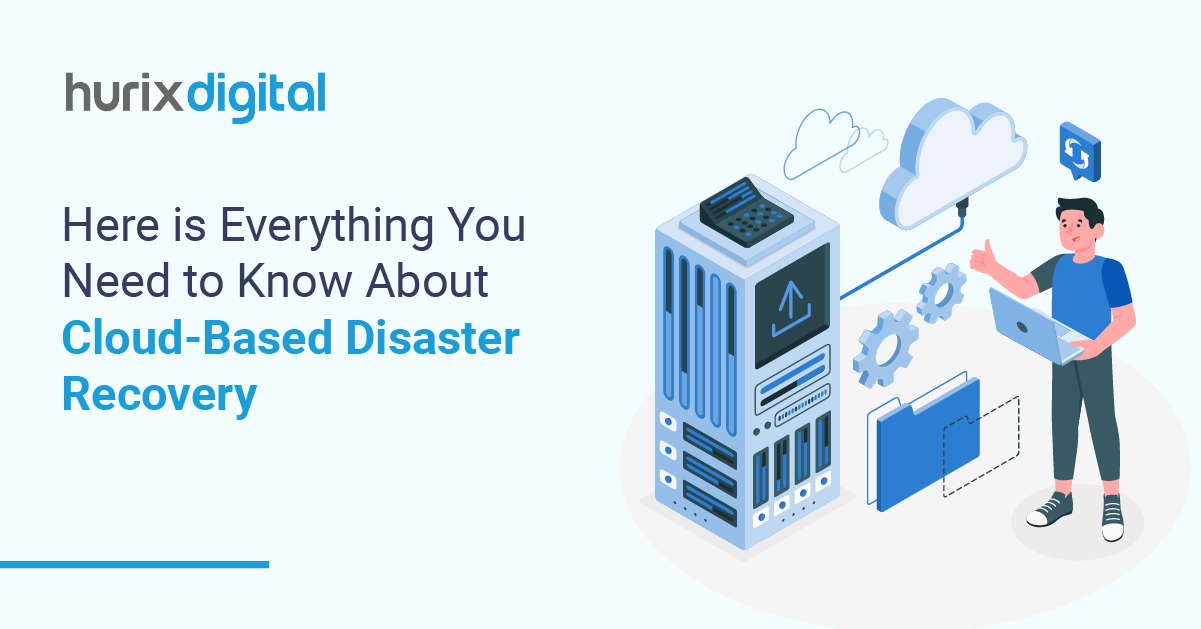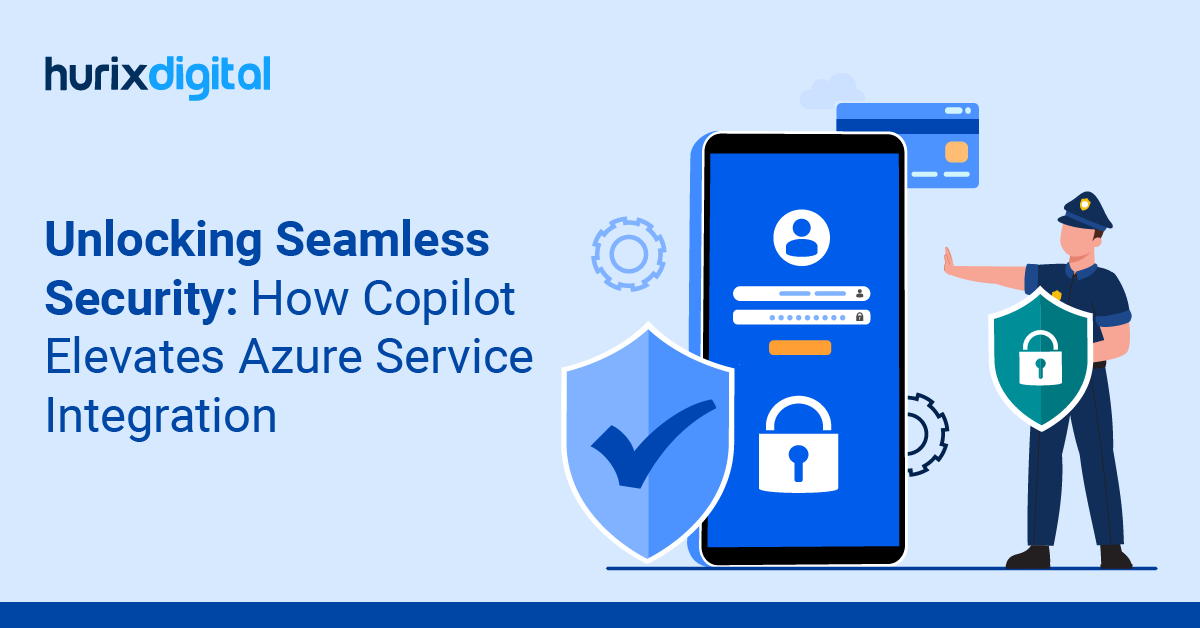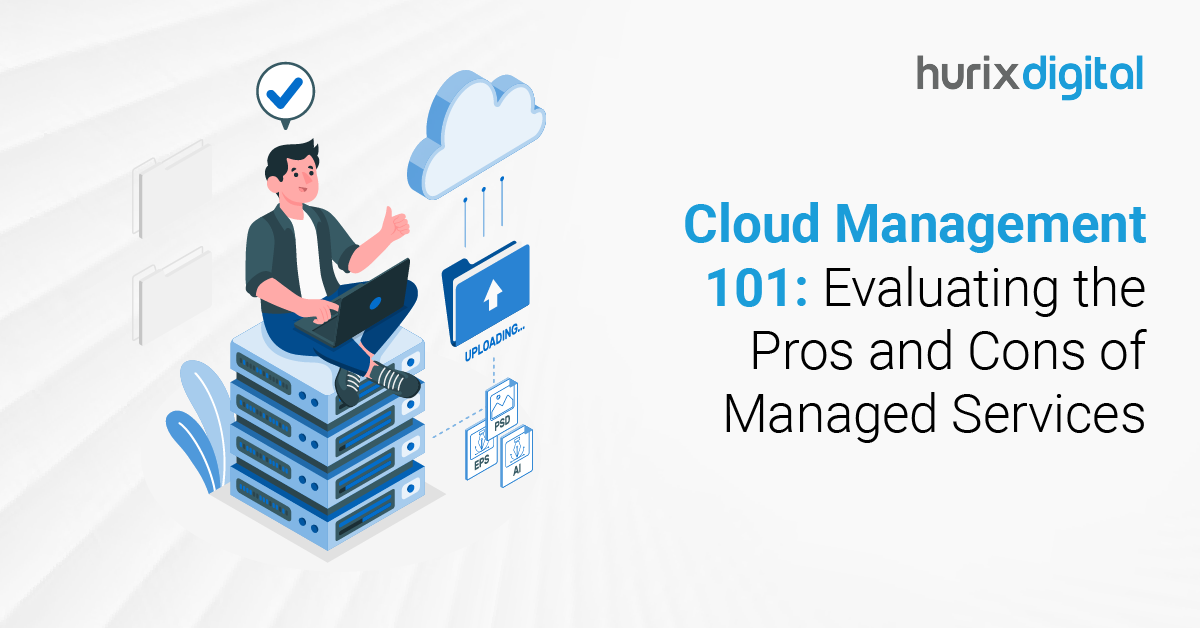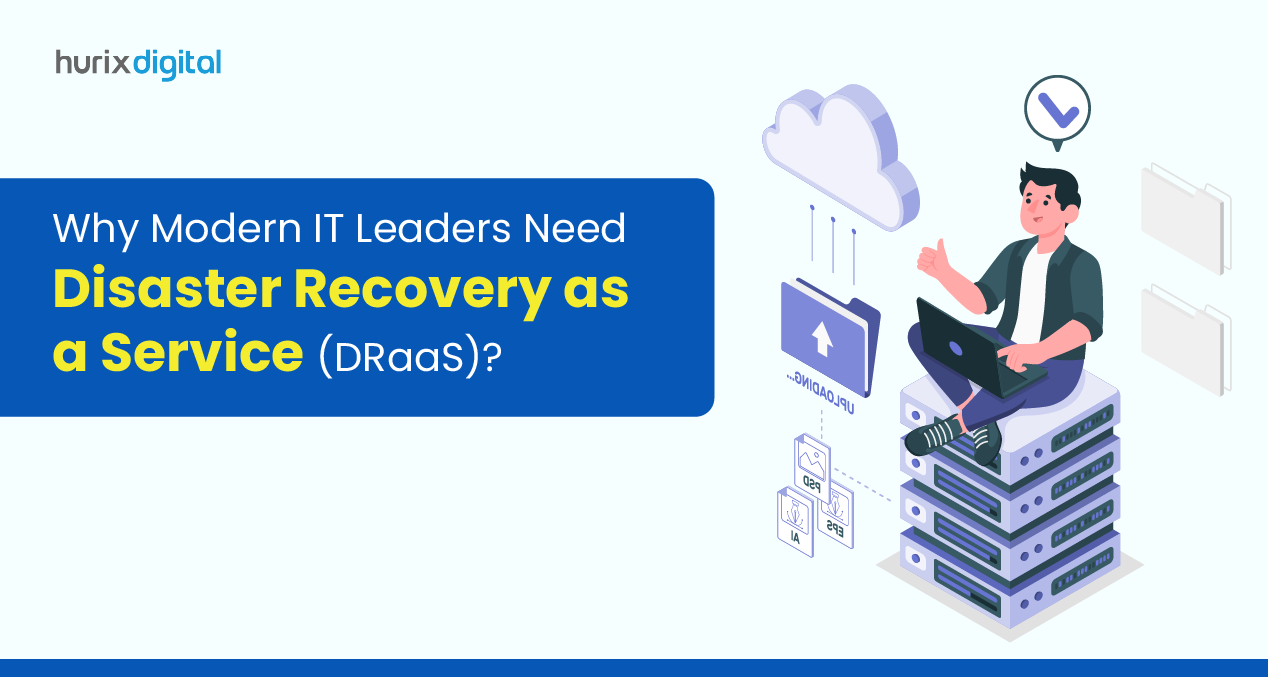
Here is Everything You Need to Know About Cloud-Based Disaster Recovery
Summarize with:
In today’s rapidly evolving digital world, businesses and organizations are becoming highly reliant on IT technology and cloud infrastructure for their operations, communications, administration, and more.
While these technological aids enhance the productivity of the business, they also expose them to a variety of risks and digital malware. Statistics reveal approximately 560,000 malware pieces are detected every day.
Consequently, businesses and organizations need to prepare robust cloud-based disaster recovery and business continuity strategies. During a crisis, these strategies can go a long way in helping a cloud infrastructure company resume operations quickly and efficiently.
If you want to know more about cloud solutions for business continuity, you are at the right place. In this comprehensively curated article, we will cover everything you need to survive a disaster.
Table of Contents:
- What Is Disaster Recovery?
- What is Business Continuity?
- What is Business Continuity Disaster Recovery (BCDR)?
- Key Differences Between Business Continuity Disaster Recovery
- Advantages of Enterprise Disaster Recovery Strategies
- How to Create Business Continuity Disaster Recovery Plans?
- Closing Thoughts
What Is Disaster Recovery?
As the name suggests, Disaster Recovery (DR) is a business’s ability to resume cloud operations and restore all IT infrastructure after a disaster, such as a natural calamity, human error, cyber attack, etc. For businesses operating on the cloud, a DR strategy is critical to avoid data loss and prolonged disruptions.
What is Business Continuity?
Business Continuity is a subset of disaster recovery and refers to a business’s ability to resume operations and remain afloat after a disaster.
A business continuity plan includes a comprehensive contingency plan regarding how the company will operate during critical events. While disaster recovery focuses on resuming IT and cloud operations, business continuity focuses more broadly on other aspects of preparedness.
What is Business Continuity Disaster Recovery (BCDR)?
Together, disaster recovery and business continuity are referred to as Business Continuity Disaster Recovery (BCDR). Businesses usually divide both processes and develop separate strategies for both, but it is important to keep in mind that both processes share several steps. The key differences are in how a cloud infrastructure company and business strategize and implement these plans.
Also Read: Free Up Your Cloud Budget: Uncovering Hidden Azure Cost Optimization Strategies
Key Differences Between Business Continuity Disaster Recovery
Mentioned below are some key differences between business continuity and disaster recovery:
1. Focus Area
While disaster recovery minimizes IT damage by implementing speedy tech-related recovery, business continuity minimizes financial loss and resuming operations as soon as possible.
2. Resources Required
The resources required for disaster recovery are network equipment, servers, etc., while business continuity requires human resources, vehicles, suppliers, physical infrastructure, etc.
3. Reactive Measures
Disaster recovery only focuses on reactive measures after a disaster strikes, whereas business continuity is more proactive in its approach and works towards preventing disasters.
Advantages of Enterprise Disaster Recovery Strategies
The primary objective of a disaster recovery plan is to minimize downtime and resolve the cloud and IT disruption as soon as possible. A FEMA report states that 40% of small and mid-sized businesses (SMBs) never reopened after a natural disaster. The report also states that though an additional 25% reopened, they could not sustain within a year.
Creating these strategies can be a highly complex and time-intensive process, but it can prove highly beneficial for a cloud infrastructure company during unfortunate and unforeseen circumstances.
Here are some major advantages of having disaster recovery strategies:
1. Scalability and Flexibility
Depending on resource and capital availability, businesses have the flexibility to scale up disaster recovery plans gradually. Additionally, it is possible to scale up disaster recovery plans substantially without a lot of investments and careful strategizing.
Small techniques like frequent back-ups, encrypted cloud access, full replication cycles, and more can greatly strengthen disaster recovery strategies.
2. Cost Efficiency
Cloud-based solutions, however, operate on a pay-as-you-go model, allowing organizations to pay only for the resources they use. This reduces capital expenditure and optimizes operational costs by eliminating the need for maintaining idle resources.
3. Fast Recovery Time
Disaster recovery helps in building cloud resilience for enterprises and enables rapid recovery of critical systems and data. Through automated failover processes and real-time replication, businesses can achieve Recovery Time Objectives (RTO) and Recovery Point Objectives (RPO) in a significantly shorter time frame.
Consequently, during some disasters and unforeseen conditions, essential services can be restored in a matter of minutes or hours.
4. Simplified Management
Cloud-based disaster recovery systems often come with a centralized dashboard for management. A single system can allow the IT team to control and mitigate disaster risks as and when required. This reduces the administrative burden and improves the overall visibility and coordination of recovery efforts.
How to Create Business Continuity Disaster Recovery Plans?
It is essential to revisit the strategies to build a robust and effective business continuity disaster recovery plan. This allows IT teams to constantly refine and improve them through the availability of new tools and techniques.
Mentioned here are four basic steps to keep in mind while creating a business continuity disaster recovery plan for a cloud infrastructure company:
Step 1: Do a Business Impact Analysis
It is recommended that you start making your disaster recovery plan by assessing what threats and disasters the business could face and their consequences. Identify each threat and its potential to disrupt your daily operations. Furthermore, additional factors may be considered due to disruption, like revenue loss, reputational damage, data leak, customer loss, etc.
Step 2: Know Your Assets
Check your assets to know what hardware, software, and IT infrastructure you have at your disposal when disaster strikes. You can categorize the assets using three labels, namely:
- Critical Assets are those you rely on every day for normal business operations.
- Important Assets are those that are not mandatory but assist in making operations more effective and efficient.
- Unimportant Assets are those that you have but do not use frequently.
Step 3: Assign Roles and Responsibilities
You must assign tasks and ensure your team members have the resources necessary to complete them during disasters and unforeseen circumstances. Some major roles and responsibilities include incident reporter, DRP supervisor, asset manager, etc.
Step 4: Rehearse Your Plan
You can only know your plan is effective when you regularly practice and update your business continuity disaster recovery plan. Additionally, remember to update the documents and guidelines each time some changes are made during rehearsals and practice sessions. It is also advisable to take some expert help during these rehearsals to help you identify areas of improvement.
Read EXCLUSIVE: Hurix Digital Modernizes IT Systems for a Food Manufacturing Giant
Closing Thoughts
It is safe to say that disaster recovery plans and enterprise cloud resilience solutions are critical components in today’s digital age. Cloud infrastructure solutions offer a powerful and cost-effective means to enhance these capabilities, providing scalability, flexibility, and rapid recovery times.
If you are also looking to implement a robust cloud infrastructure for enterprise resilience and make a trustworthy business continuity disaster recovery plan, you must visit us at Hurix Digital.
We can help you help you transform and secure your operations through cloud excellence. Our cutting-edge technology ensures seamless integration, robust security, and unparalleled scalability, enabling your organization to innovate and grow without limits.
Reach out to us today and get started!
Summarize with:

Vice President and Strategic Business Unit Head – Cloud Services
A top technology management voice on LinkedIn with 20 Years of experience in Information Technology, Cloud Services, Digital Transformation, Application Modernization, Managed Services, IT Security Engineering and Operations Management. An avid technology Leader, Leadership Speaker, Author & Coach.
 A Space for Thoughtful
A Space for Thoughtful 



